
- 1 Comment
- PRMA Plastic Surgery
What should you do to prepare the night before breast reconstruction surgery?
It’s the night before your breast reconstruction surgery. You are probably feeling a bit anxious and perhaps even a little stressed over your upcoming day. No worries! This is completely normal!
In the midst of all these feelings, we don’t want you to forget any of the important to-do’s! Here are 7 things to remember the night before your surgery:
- Shower with Hibiclens (4% Chlorhexadine) the night before surgery. Give special attention to the breasts, chest, abdomen and underarm.
- Do not use any powder or deodorant in the underarm area after bathing and avoid ALL lotions and perfumes. Do not use any powder or deodorant in the underarm area until given clearance by your nurse or surgeon.
- Do not eat solid foods or drink any fluids after midnight unless you are following our new ERAS protocol.
- Be sure you’ve picked up your prescription medications and have them ready to take with you to the hospital.
- Place a pillow in your car for the ride home from the hospital. This will help cushion the seat belt from digging into your abdomen or chest and will make your ride home more comfortable.
- Make sure you have your hospital bag packed and ready to go. Include loose fitting clothes that don’t need to be put on over your head, your medications, a toothbrush, some comfy socks or slippers, some entertainment (book, crossword puzzles, etc.), and cotton t-shirts to go under your abdominal binder.
- Get plenty of sleep. As hard as it may be with your anticipated big day, it is important for your body to be rested and ready to go for your surgery.
Author: Dr. Minas Chrysopoulo and Courtney Floyd
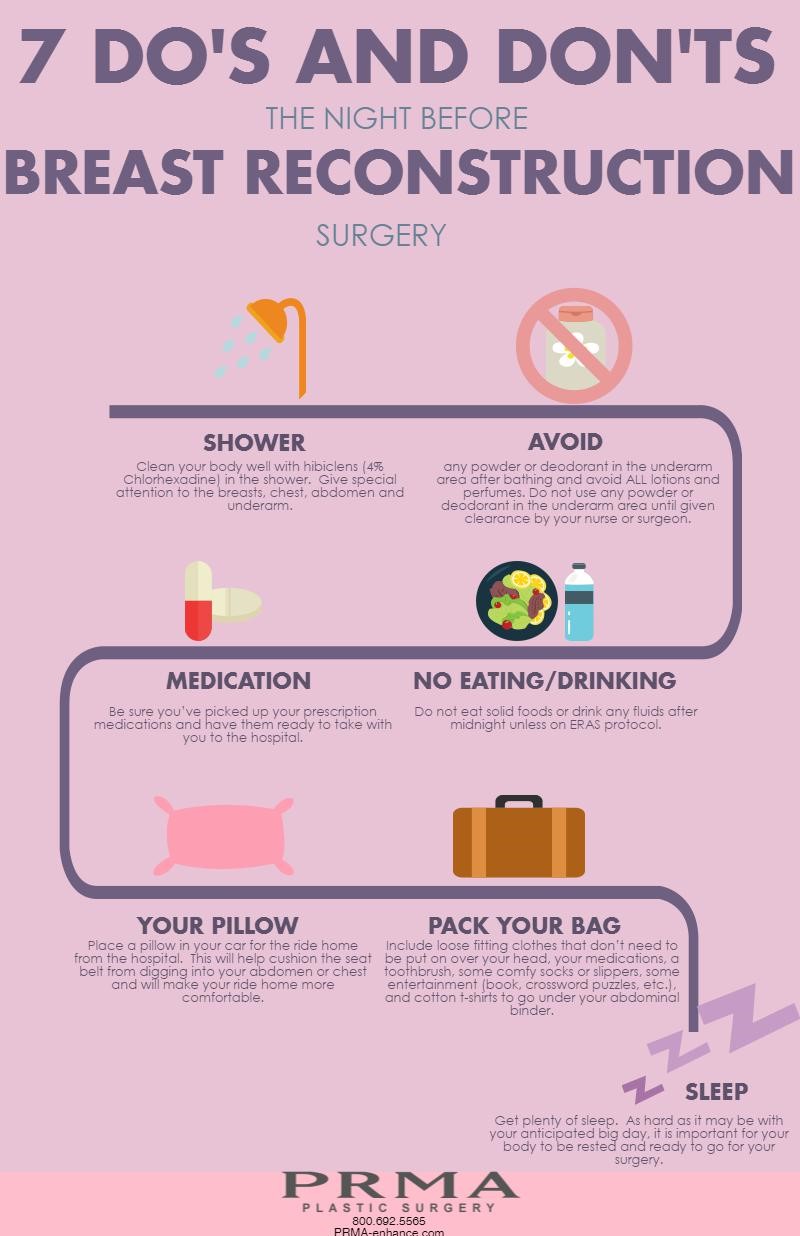
It’s the night before your breast reconstruction surgery. You are probably feeling a bit anxious and perhaps even a little stressed over your upcoming day. No worries! This is completely normal!
Leave Comment

“As a Lymphatic Therapist who works on cosmetic surgery patients pre and post-op, I know well that the recovery is mentally as well as physically challenging. I suggest that anyone opting for plastic surgery come in before-hand to get their lymphatic system moving *before* surgery ( https://haltmyswelling.com/prepare-yourself-for-plastic-surgery ). This helps clear out the body’s natural drainage system so that it is ready to cope with the inevitable swelling. Having the lymphatic system clear also ensures that the immune system can move about freely (it travels through the lymphatic system) in order to help prevent infection, and that fat-soluble vitamins critical for the repair of damaged tissues can be absorbed by the body and delivered to the surgical site(s).
Following the surgery, lymphatic drainage ( https://haltmyswelling.com/cosmetic-surgery-therapy-faq ) by a qualified Certified Lymphedema Therapist (CLT) is critical. You will not get the same result by going to a big box massage chain place. CLT’s undergo rigorous training that qualifies them to work with complex lymphatic conditions. They are the most qualified people to see.
Post-operative lymphatic work significantly reduces post-operative pain and swelling and can help move fluid that causes lumps and bumps..”
Shannon G., Certified Lymphedema Therapist
July 20,2020
Sign Up for Our Monthly Newsletter
Continue Reading
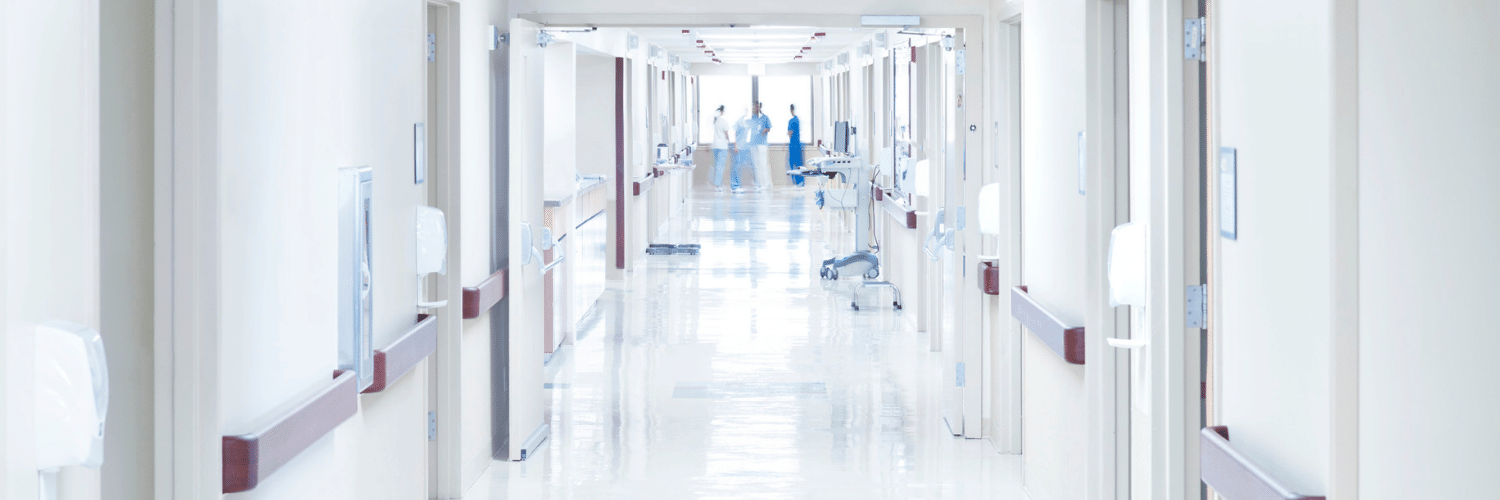
Hospital Stay After DIEP Flap Breast Reconstruction: What to Expect
Hospital Stay After DIEP Flap Breast Reconstruction: What to Expect December 09, 2020 Share on Facebook Twitter Linkedin Following DIEP flap breast reconstruction, patients are typically in the hospital for about 2-3 days. During that time, patients often wonder what they should expect. Here is what a typical hospital stay for PRMA patients entails… Flap […]
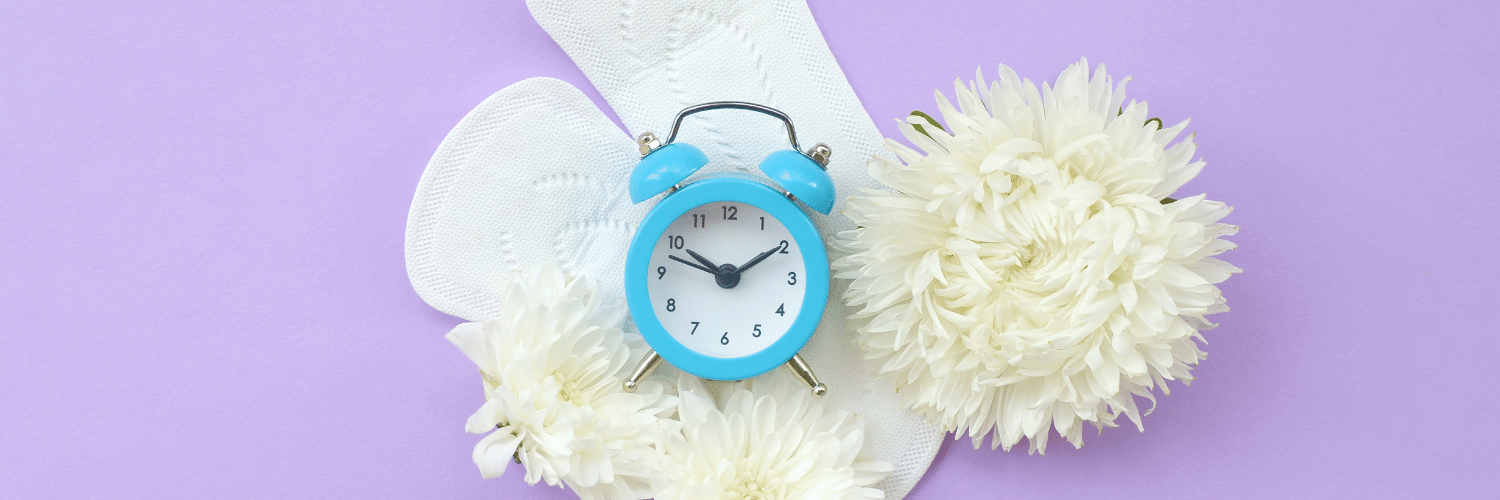
Breast Reconstruction Surgery and Your Period
Breast Reconstruction Surgery and Your Period December 02, 2020 Share on Facebook Twitter Linkedin During our pre-operative appointment with patients, a topic that occasionally arises is menstrual cycles. It is completely normal for women to experience changes with their periods throughout breast cancer treatments. These can be temporary or permanent. Periods can be unpredictable following […]
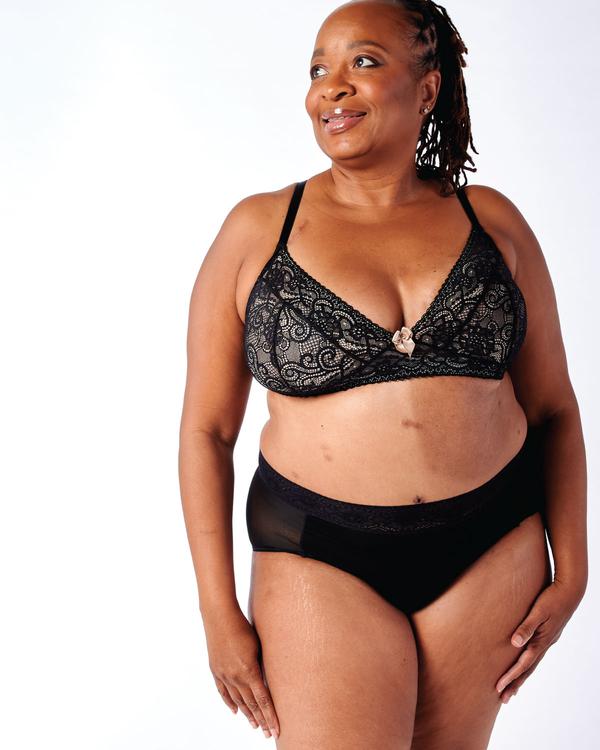
What Bras and Abdominal Girdles to Wear After Breast Reconstruction Surgery
What Bras and Abdominal Girdles to Wear After Breast Reconstruction Surgery November 17, 2020 Share on Facebook Twitter Linkedin When preparing for breast reconstruction surgery, many patients want to know what types of bras and abdominal girdles they should plan to wear after surgery. Although every surgeon has slightly different preferences, we have put together […]

My 5 DIEP Flap Realities | A Guest Blog From Julie
My 5 DIEP Flap Realities October 28, 2020 Share on Facebook Twitter Linkedin Hi everyone, my name is Julie from It’s a Bosom Thing. I am so happy to be here as a guest blogger and have this opportunity to share with you a few thoughts about life after DIEP Flap Surgery. I was diagnosed […]
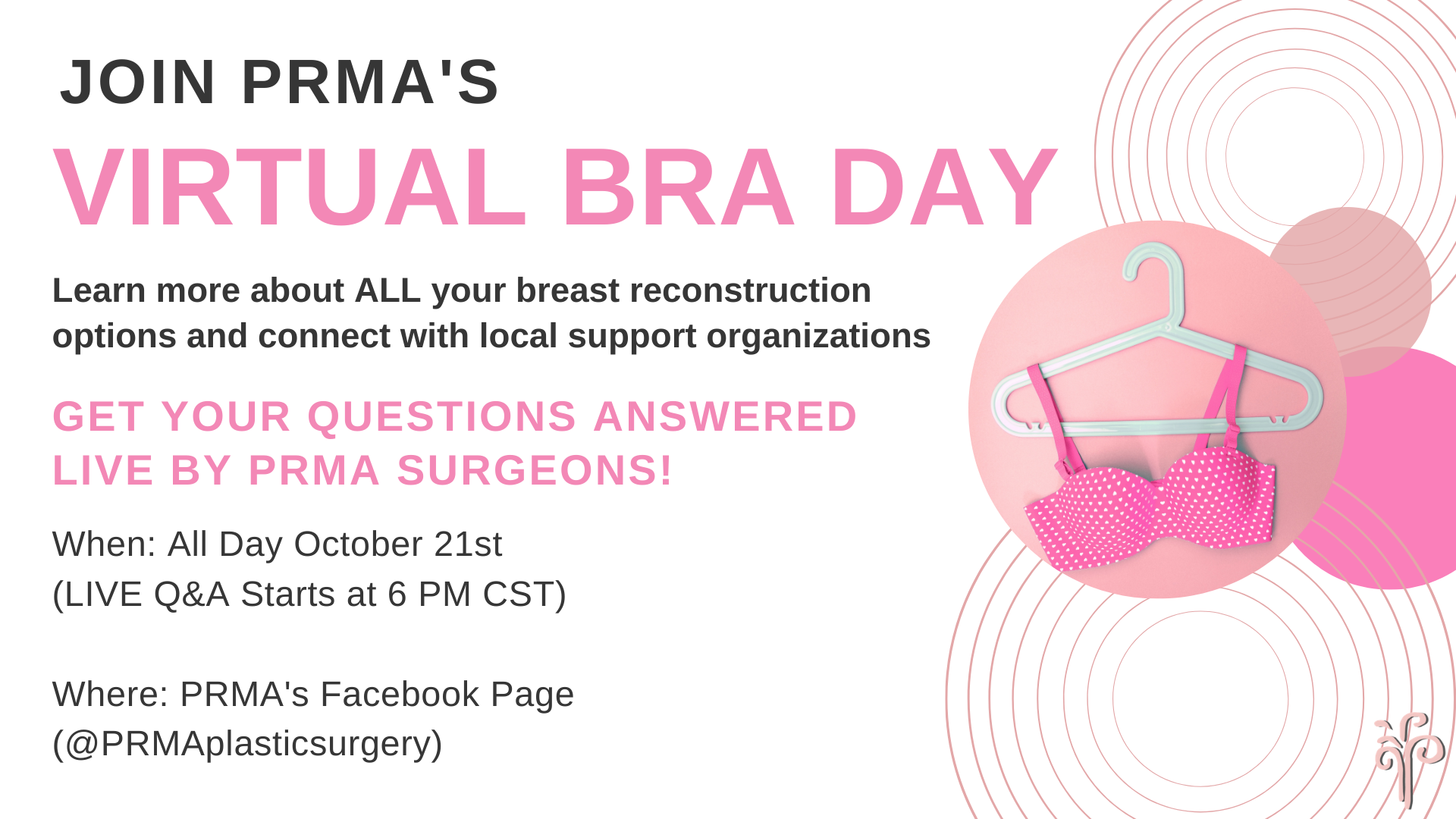
PRMA’s BRA Day Virtual Event Recap
PRMA’s BRA Day Virtual Event Recap October 22, 2020 Share on Facebook Twitter Linkedin Yesterday we celebrated Breast Reconstruction Awareness day! Although we missed seeing everyone in person this year, we were still able to spread education and awareness on ALL reconstructive options through our virtual efforts. We were also able to share information on […]
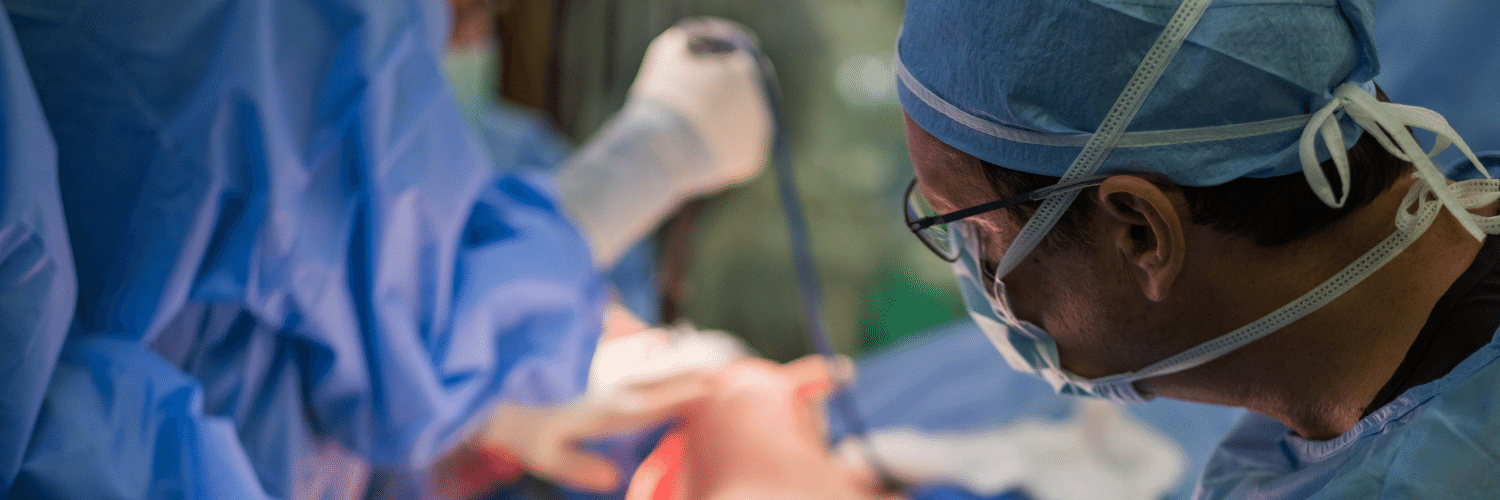
Second Stage DIEP Flap Surgery
Second Stage DIEP Flap Surgery September 08, 2020 Share on Facebook Twitter Linkedin DIEP flap breast reconstruction is typically comprised of at least two stages for the best outcomes. The second stage of surgery is commonly referred to as the “revision” stage and is usually performed about three months after the initial reconstruction. The purpose […]

If ‘Flaps’ Are Such A Great Breast Reconstruction Option, Why Doesn’t Everyone Get Them?
If ‘Flaps’ Are Such A Great Breast Reconstruction Option, Why Doesn’t Everyone Get Them? September 08, 2020 Share on Facebook Twitter Linkedin Flap-based breast reconstruction procedures, like the DIEP flap, offer patients a safe, natural implant-alternative option to reconstruction after a mastectomy. Flap surgeries are permanent and are associated with fewer complications after radiation when […]
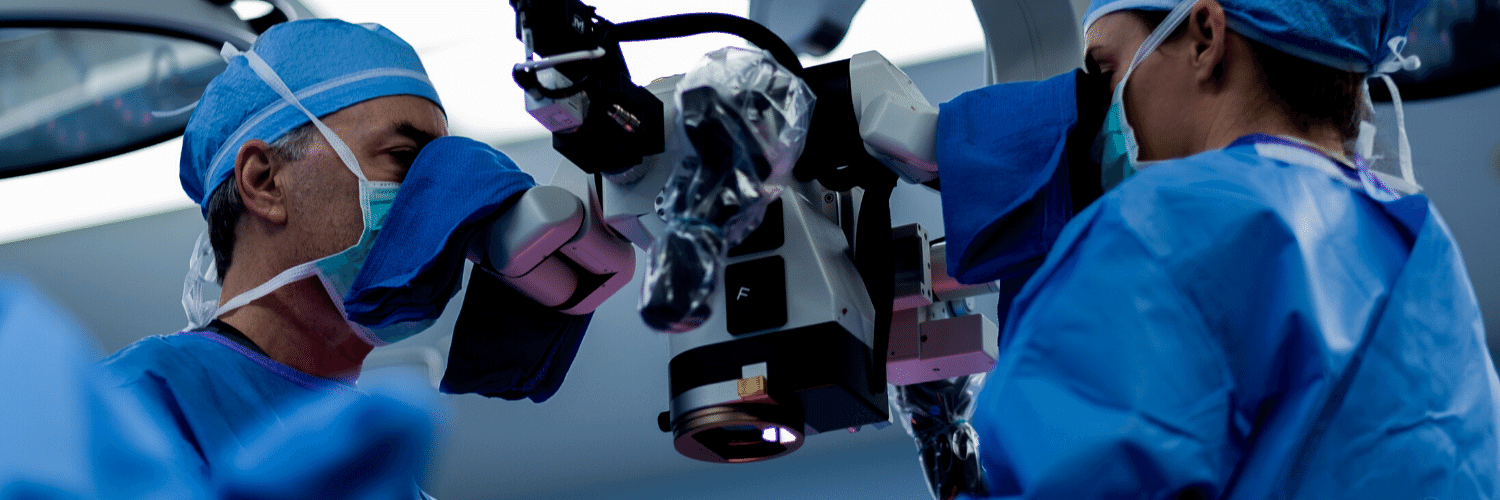
What is a Skin Island and How is it Used in Breast Reconstruction?
What is a Skin Island and How is it Used in Breast Reconstruction? September 08, 2020 Share on Facebook Twitter Linkedin What is a “skin island”? The term “skin island” is used to describe the remaining visible skin from a transplanted “flap” of tissue. In the setting of DIEP flap breast reconstruction, the skin island […]

Comparing APEX Flap and DIEP Flap Breast Reconstruction
Comparing APEX Flap and DIEP Flap Breast Reconstruction August 10, 2020 Share on Facebook Twitter Linkedin We have been receiving numerous inquiries about the “APEX flap” recently. Patients want to know what it is and how it differs from the DIEP flap. APEX is an acronym that stands for “Abdominal Perforator Exchange”. Many patients believe […]
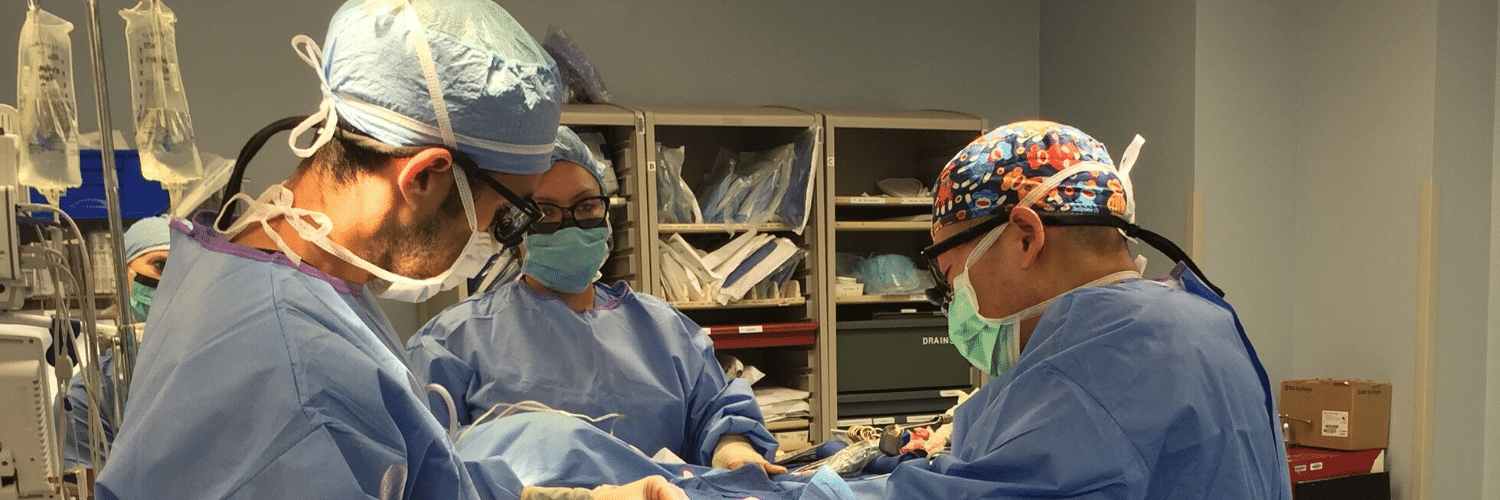
Monitoring the Health of Your Flap During & After Surgery
Monitoring the Health of Your Flap During & After Surgery July 21, 2020 Share on Facebook Twitter Linkedin Autologous flap (or tissue) breast reconstruction procedures represent today’s most advanced options for rebuilding a breast(s) following mastectomy. The most commonly performed method of flap-based reconstruction at PRMA is the DIEP flap. During this procedure, surgeons transplant skin […]

PRMA DIEP Flap Breast Reconstruction Research Makes the Cut
Questions Your Breast Reconstruction Surgeon Wants You To Ask

Shannon G., Certified Lymphedema Therapist
“As a Lymphatic Therapist who works on cosmetic surgery patients pre and post-op, I know well that the recovery is mentally as well as physically challenging. I suggest that anyone opting for plastic surgery come in before-hand to get their lymphatic system moving *before* surgery ( https://haltmyswelling.com/prepare-yourself-for-plastic-surgery ). This helps clear out the body’s natural drainage system so that it is ready to cope with the inevitable swelling. Having the lymphatic system clear also ensures that the immune system can move about freely (it travels through the lymphatic system) in order to help prevent infection, and that fat-soluble vitamins critical for the repair of damaged tissues can be absorbed by the body and delivered to the surgical site(s).
Following the surgery, lymphatic drainage ( https://haltmyswelling.com/cosmetic-surgery-therapy-faq ) by a qualified Certified Lymphedema Therapist (CLT) is critical. You will not get the same result by going to a big box massage chain place. CLT’s undergo rigorous training that qualifies them to work with complex lymphatic conditions. They are the most qualified people to see.
Post-operative lymphatic work significantly reduces post-operative pain and swelling and can help move fluid that causes lumps and bumps..”